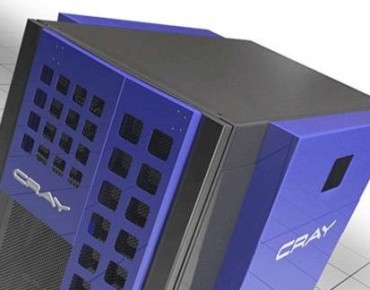Cray Buys Gnodal Networking Assets, Hires Key People

British high-end Ethernet switch maker Gnodal went into administration in early October, and Cray has hired the key staff at the company while also picking up a bunch of intellectual property related to networking.
By taking on fifteen key employees of Gnodal, Cray is going to more than double its research and development team in Europe. Those key employees hired by Cray represent the bulk of the people who worked at Gnodal, according to Cray.
"We are very excited that the founders and key engineers at Gnodal have decided to join Cray as part of our global R&D team," explained Ulla Thiel, vice president of Cray Europe. "Since the launch of the Cray Exascale Research Initiative in Europe in 2009, Cray has steadily expanded its R&D base in Europe. Today we have highly talented software developers at the Cray Europe Exascale Center and at several Cray Centers of Excellence across Europe, and we are now adding significant hardware and software development to our activities in Europe."
The financial terms of the agreement between Cray and the administrators for Gnodal were not disclosed.
As part of the deal, Cray said in a statement that it was also acquiring "certain intellectual property rights including patents and design copyrights" and wanted to make it crystal clear that it was not purchasing the ongoing business of Gnodal or "any of its stock in trade or accounts."
Gnodal was founded in 2007 and sought to differentiate itself from the pack in the Ethernet switch arena by offering super-dense, very low latency switches. Fred Homewood, the company's founder and chief technology officer, was an ASIC designer at Quadrics, a British supercomputer interconnect maker that had a good run but which closed its doors in May 2009. Duncan Roweth, one of Quadrics founders and also based in Bristol, England like Gnodal, took a job at Cray to work on interconnects. Since that time, Cray has sold off its "Gemini" and "Aries" interconnects, used in the prior and current generations of its massively parallel systems, to Intel. Roweth is currently a principal engineer in the CTO Office at Cray.
The latest Gnodal switches are based on a homegrown ASIC called Peta, which is used in the GS Series of 10 Gb/sec and 40 Gb/sec Ethernet switches. The company launches its first products in March 2011. Gnodal crammed a lot of ports into a small space – a 1U enclosure could hold 72 10 Gb/sec ports, and a 2U enclosure could do 72 40 Gb/sec ports – and offered port-to-port latencies on the order of 150 nanoseconds.
Sources at Cray tell EnterpriseTech that Gnodal had "a reasonable number of patents centered around networks and properties of data movement in computer systems," and so the asset acquisition was also interesting for the supercomputer maker.
It would be unwise to jump to any conclusions about Cray getting into the interconnect market. This seems unlikely. But having lots of experts who understand the intricacies and eccentricities of interconnects is absolutely going to be a key for building any extreme-scale systems, whether or not these machines run supercomputer simulations or enterprise applications, and Cray has been crystal clear that it wants to make machines for both markets.










